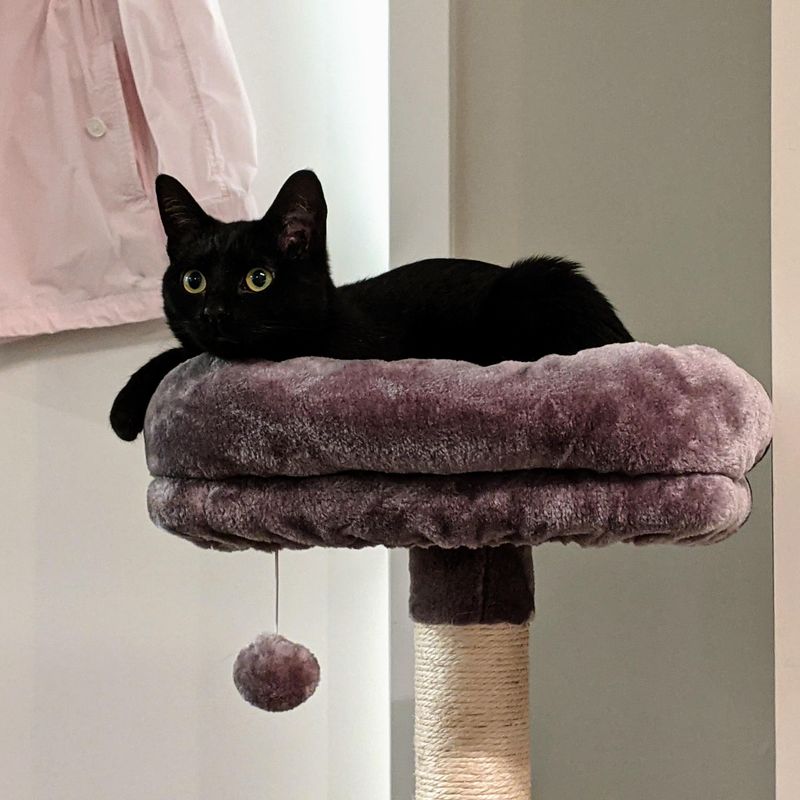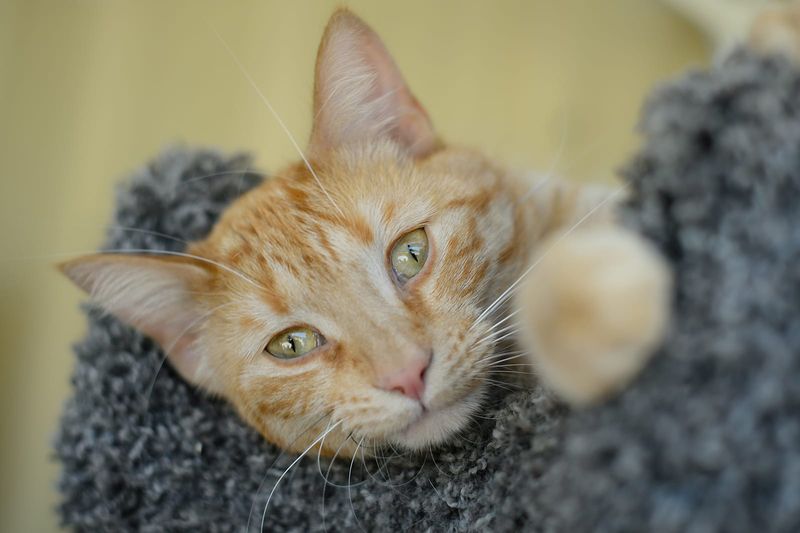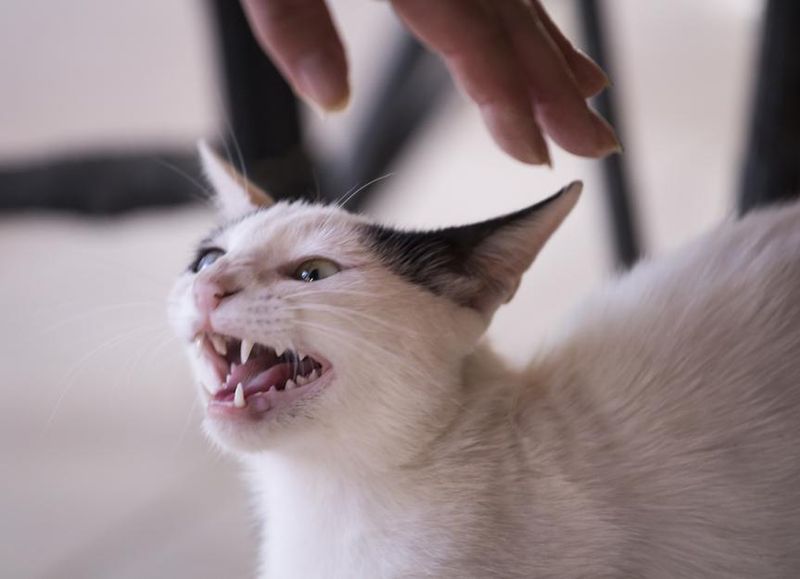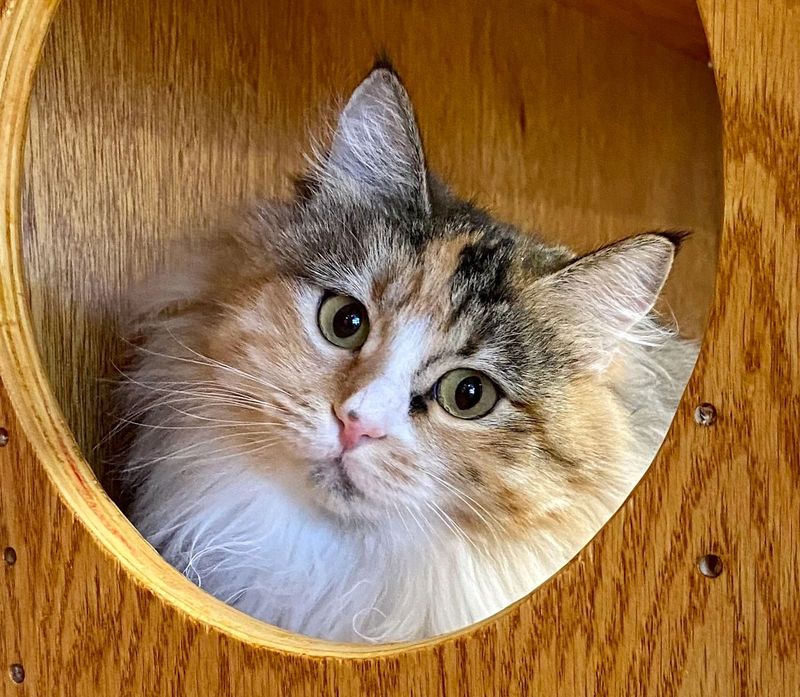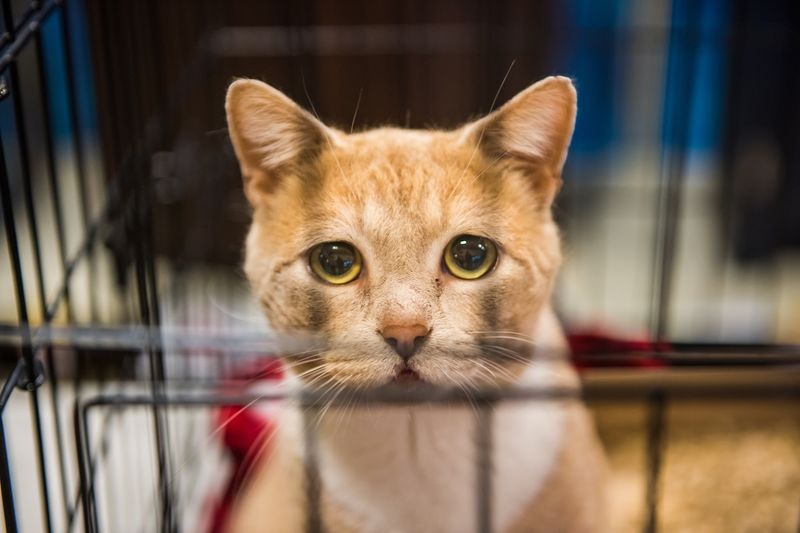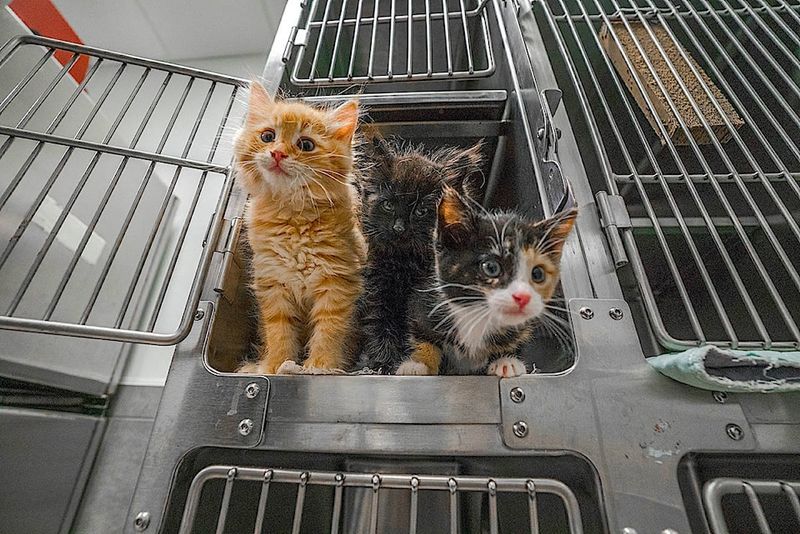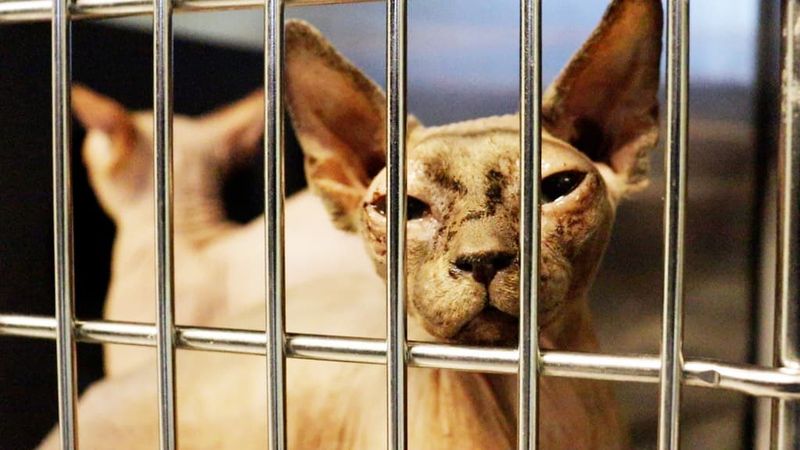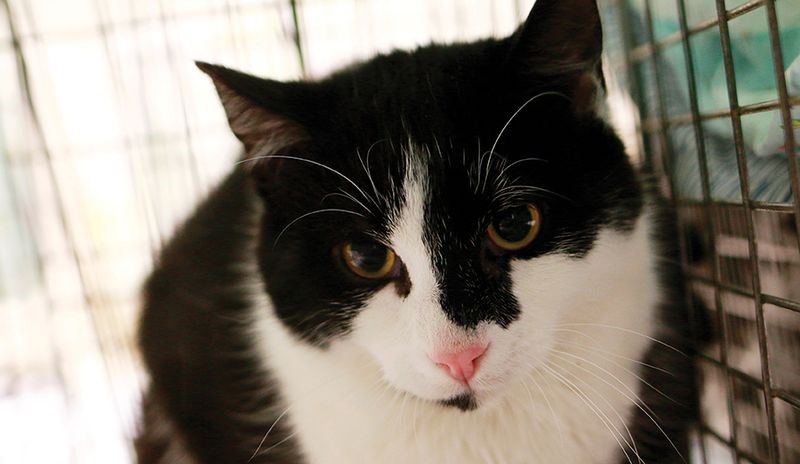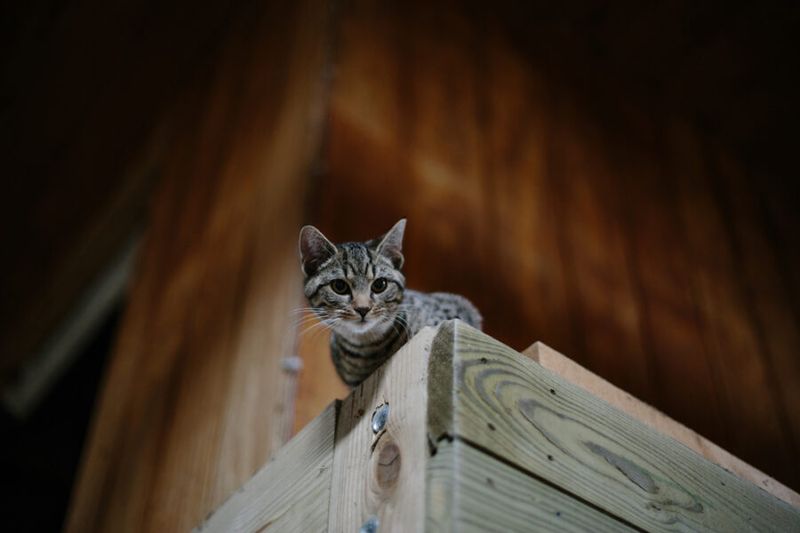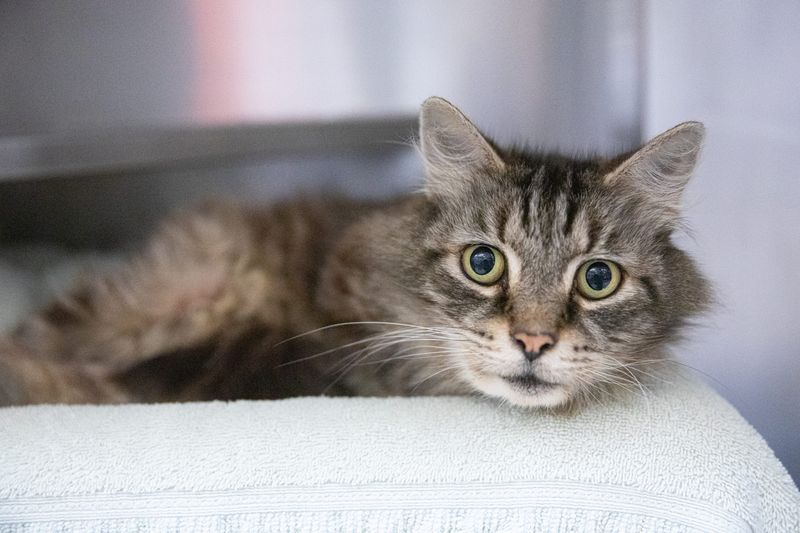📖 Table of Content:
- 1. Lack of Medical Records or History
- 2. Signs of Illness or Poor Grooming
- 3. Excessive Aggression or Fear
- 4. Unexplained Lethargy or Hyperactivity
- 5. Inconsistent Behavior Between Shelter Staff
- 6. No Interaction with People or Environment
- 7. Shelter Won’t Allow Handling or Visits
- 8. Dirty or Overcrowded Living Conditions
- 9. Frequent Returns or Re-Adoptions
- 10. Inadequate or Missing Socialization
- 11. Unwillingness to Eat or Drink
- 12. No Clear Adoption Process or Follow-Up Support
Adopting a cat from a shelter is one of the most rewarding ways to welcome a new companion into your life. Not only are you giving a deserving animal a second chance, but you’re also helping ease the burden on overcrowded shelters. However, not every adoption story starts smoothly, and it’s important to go in with both your heart and your eyes open.
While shelter cats are often loving and grateful animals, their pasts can be complex. Some may carry physical scars, others emotional ones, and some may have gone without proper care for a long time. For first-time adopters or even seasoned cat lovers, it’s easy to get swept up in the moment and overlook subtle signs that something might not be right. These red flags don’t necessarily mean you shouldn’t adopt the cat — but they do signal a need for further evaluation, discussion, or preparation. Understanding what to look for will help ensure a smoother transition for both you and your future feline friend. A bit of caution now can prevent heartbreak or stress later.
This guide outlines 12 key red flags to watch for when adopting a cat from a shelter. With each, we explore what the warning sign may mean and how to approach the situation responsibly.
1. Lack of Medical Records or History
One of the first things to ask about is the cat’s medical background. If the shelter can’t provide vaccination records, spay/neuter information, or any history of treatment, proceed cautiously. Cats without these records may not have received proper care, and this can lead to both health risks and future expenses. In some cases, the cat may have come in as a stray with no known history, which is understandable — but a reputable shelter will still provide basic health screenings. Transparency is key in responsible adoption, and vague or missing records can be a red flag. It’s also important to know if the cat has been tested for common illnesses like FIV or FeLV. Always ask for documentation, not just verbal confirmation.
2. Signs of Illness or Poor Grooming
Physical appearance can tell you a lot about a cat’s overall health. Cats are naturally clean animals, so matted fur, greasy coats, or visible dirt often indicate neglect or illness. Watch for signs like runny eyes, nasal discharge, or persistent sneezing, which could point to upper respiratory infections common in shelters. Ear mites, fleas, or untreated wounds are also common in poorly maintained environments. While some medical issues are easily treatable, others may require ongoing care or lead to future complications. The shelter should be honest about any known conditions and whether the cat is being treated. Observing the cat’s posture, grooming habits, and alertness will provide valuable clues about its well-being.
3. Excessive Aggression or Fear
Behavioral extremes often reveal a cat’s emotional state and past trauma. If the cat hisses, swats, growls, or cowers in the corner consistently, it may be reacting from fear or poor socialization. Some cats need time to adjust to new surroundings, but prolonged or intense aggression shouldn’t be ignored. On the other hand, extreme fearfulness may suggest the cat will need a long rehabilitation period and a very patient home. It’s crucial to distinguish between temporary stress and ingrained behavior issues. Shelters should be able to describe the cat’s typical demeanor when not under stress. Temperament is one of the hardest traits to change, so know your limits and experience before taking on a cat with behavioral challenges.
4. Unexplained Lethargy or Hyperactivity
Energy levels can tell you just as much as behavior does. Cats that seem overly tired, barely move, or sleep in unnatural positions might be ill or in pain. Conversely, those that pace, yowl excessively, or dart around erratically may be dealing with anxiety or neurological issues. It’s important to compare their behavior with what’s typical for their age and breed. While a sleepy cat may simply be calm, and a hyper cat may be playful, extremes in either direction could mean trouble. Ask staff whether the cat’s current state is normal or if they’ve observed a change in recent days. A temporary burst of energy or sluggishness is common in shelter environments but should be short-lived. When in doubt, request a full health check.
5. Inconsistent Behavior Between Shelter Staff
Trusting your instincts becomes harder when you’re getting mixed messages. If one staff member says the cat is affectionate and another claims it’s shy or aggressive, this should raise questions. Inconsistent accounts may reflect rushed evaluations or a lack of time spent with the animal. While some variance is normal, especially in high-stress environments, wild differences point to unpredictability. Ask to spend time with the cat yourself and observe its reactions to different people. Reliable staff should offer similar stories or at least explain the discrepancies. A cat with a confusing behavior profile may need more experienced care. Consistency, both in the cat’s behavior and the shelter’s observations, builds confidence in your decision.
6. No Interaction with People or Environment
Engagement is an important sign of a healthy, socialized cat. If a cat completely ignores you, the toys, or even food, it’s possible they are depressed or shut down. This can be particularly true for cats that have spent a long time in the shelter or have endured multiple traumas. While introversion is not necessarily a problem, a total lack of interest is concerning. Consider whether the cat has ever shown signs of play or affection, and ask staff for details. Sometimes, quiet observation can reveal hidden personality traits, but total disengagement is a red flag. Cats that do not explore their surroundings may struggle to adjust to a new home.
7. Shelter Won’t Allow Handling or Visits
Alarm bells should ring if you’re discouraged from interacting with the cat before adopting. A reputable shelter will allow (and often encourage) hands-on visits, bonding time, and supervised play. If you’re only allowed to look through a cage or aren’t permitted to hold the cat, there may be issues they don’t want you to see. This lack of transparency could point to aggression, illness, or even legal/ownership complications. Always insist on spending time with the cat in a calm, safe space. You deserve the opportunity to assess the animal’s behavior and comfort level firsthand. Any reluctance from the shelter to allow that interaction should not be taken lightly.
8. Dirty or Overcrowded Living Conditions
Environment speaks volumes about the shelter’s standards of care. Filthy litter boxes, strong odors, mold, or visibly overcrowded cages are all red flags. These conditions increase the risk of disease transmission and suggest poor management. While shelters may face budget constraints, basic cleanliness and hygiene should still be a priority. Overcrowding also limits the staff’s ability to give each cat proper attention. A stressed environment can affect behavior and health in ways that aren’t immediately obvious. Take note of how clean, spacious, and well-ventilated the facility is before moving forward.
9. Frequent Returns or Re-Adoptions
Every now and then, a cat just isn’t a fit for a particular home — but if it’s happened multiple times, dig deeper. A cat with a pattern of being returned may have unresolved behavioral or health issues. Ask if the shelter knows why previous adoptions didn’t work out and what has been done to address the issues. Patterns of aggression, litter box avoidance, or incompatibility with other pets often appear in return histories. Understanding the cat’s adoption journey can help you prepare or decide if it’s right for you. Shelters should be upfront about these situations rather than sugarcoating them. A history of failed placements doesn’t mean the cat is unadoptable — but it does mean you’ll need to prepare more carefully.
10. Inadequate or Missing Socialization
Early socialization shapes how a cat interacts with people, animals, and environments. Cats that avoid eye contact, flinch at touch, or freeze when approached may not have had positive human interactions. Socialization is especially crucial during kittenhood, but even adult cats benefit from it. Ask if the cat was fostered or had exposure to people, children, or other animals. A lack of social experience may not be a dealbreaker, but it signals a longer adjustment period. You may need to invest time in building trust and confidence with the cat. Not all homes are equipped for that journey, and it’s okay to recognize your limits.
11. Unwillingness to Eat or Drink
Refusing food or water isn’t just a preference — it’s often a signal of distress or illness. In a shelter setting, many cats may skip a meal out of nervousness, but long-term refusal is concerning. Watch how the cat behaves around food, whether they sniff and walk away or show zero interest. Ask if the cat has been eating regularly and what its usual appetite looks like. A cat that hasn’t eaten in over 24 hours could be in danger of hepatic lipidosis or other serious conditions. Drinking habits are just as important; dehydration can escalate quickly. Make sure eating and drinking behavior is being monitored and documented by staff.
12. No Clear Adoption Process or Follow-Up Support
Finally, a shelter should be as invested in the success of the adoption as you are. If they rush you through paperwork, don’t offer background info, or seem uninterested in post-adoption support, think twice. A thorough adoption process shows the shelter prioritizes the animal’s well-being. Look for shelters that provide resources, return policies, and contact options in case you have questions. Lack of guidance could leave you stranded if issues arise later. Trustworthy shelters usually do home checks, interviews, or follow-ups — all signs they care about long-term outcomes. Avoid organizations that treat adoption like a transaction rather than a commitment.

